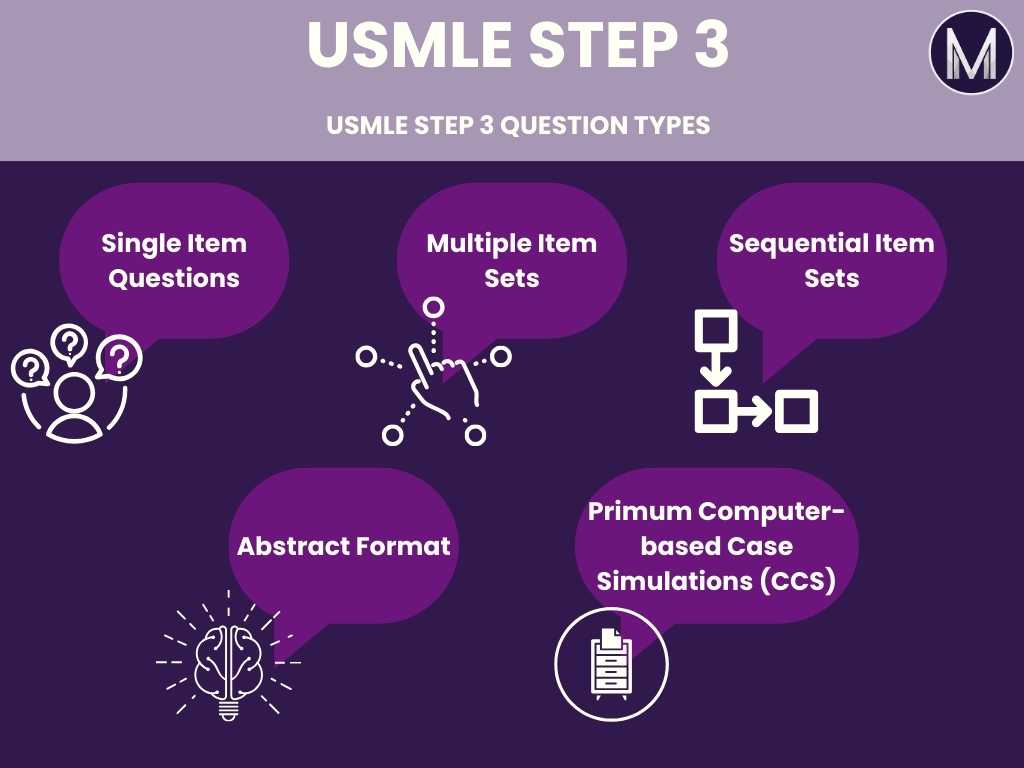
USMLE Step 3 Explained

Congratulations on making it this far in your medical journey! You’ve passed the grueling USMLE Step 1 and Step 2, and now you’re ready to tackle the final obstacle before you can practice medicine independently in the United States: the USMLE Step 3.
Unlike the previous two steps, which mainly test your knowledge and clinical skills, Step 3 USMLE focuses on your ability to manage patients as a licensed physician. The USMLE Step 3 format covers various topics, from medical ethics patient communication, clinical decision-making, and emergency management. As a result, it is considered one of the most challenging exams in the entire medical licensure process.
But don’t worry; we’ve got you covered! In this blog post, we’ll walk you through everything you need about the USMLE Step 3, from the exam format and content to study tips and resources. So let’s get started!
USMLE Step 3 Registration
For USMLE Step 3 registration, you will need to follow the following steps:
- Verify eligibility: Before registering for the exam, ensure you can take the USMLE Step 3. You must have passed Step 1 and Step 2 exams to take Step 3.
- Create an account on the USMLE website: If you still need to, create an account on the USMLE website. You must provide personal information, including your name, email address, and contact information.
- Select a testing region: Choose where you want to take the exam. The exam is offered year-round at various Prometric testing centers throughout the United States and its territories and in some international locations.
- Schedule your exam date: Once you have selected your testing region, you can schedule your exam date and location. Schedule your exam well, as testing centers can fill up quickly.
- Pay the exam fee: The USMLE Step 3 cost varies depending on your location and the testing center you choose. As of 2023, the exam fee is $915. You can pay the fee online using a credit or debit card.
- Review exam day checklist: Before your exam, review the checklist provided by USMLE. This will include information about what to bring to the testing center, what to expect on exam day, and other essential details.
By following these steps, you can successfully register for the USMLE Step 3 exam and take the next step toward obtaining your medical license.

USMLE Step 3 Format
The USMLE Step 3 is a two-day exam that consists of two parts: the Multiple-Choice Questions (MCQ) section and the Computer-Based Case Simulations (CCS) section.
Day 1: MCQ Section
The USMLE Step 3 format for the MCQ section is a 7-hour test that includes around 232 multiple-choice questions. The questions cover various topics, such as internal medicine, pediatrics, surgery, obstetrics and gynecology, psychiatry, and preventive medicine. You will have 60 minutes to complete each block of 38 to 39 questions.
Day 2: CCS Section
The USMLE Step 3 format for the CCS section is a 9-hour test that includes six cases of varying complexity. This section will present virtual patient cases that simulate real-life clinical situations. You will be asked to manage these patients, order tests and treatments, and make clinical decisions based on the information provided. The CCS section assesses your ability to diagnose and manage patients safely and effectively.

Scoring
The Step 3 USMLE is scored on a three-digit scale, with a passing score of 196. The scores are based on your performance in both the MCQ and CCS sections. Your score report will also include a performance profile that compares your scores to those of other examinees in the same testing period.
Preparation
Preparing for the Step 3 USMLE can be daunting, but you can increase your chances of success with the right approach and resources. Here are some tips and strategies to help you prepare for the exam:
- Start early: The USMLE Step 3 test covers a vast amount of material, and it is crucial to give yourself enough time to review and master it. Aim to start preparing at least six months before your exam date.
- Know the format: Familiarize yourself with the exam format and content. Review the USMLE Step 3 Content Description and General Information Booklet, which provides detailed information about the exam’s structure and content.
- Practice, practice, practice: The best way to prepare for the CCS section is by practicing with sample cases. The USMLE website offers sample CCS cases that you can use to practice your skills.
- Use multiple resources: Use various study resources, such as textbooks, a free USMLE question bank, review courses, and USMLE tutoring. Some popular resources include UWorld, Kaplan, and First Aid for the USMLE Step 3.
- Take care of yourself: Remember to take breaks and take care of yourself. Get enough sleep, eat healthily, exercise, and take time to relax and recharge.

Conclusion
The Step 3 USMLE test is the final hurdle toward becoming a licensed physician in the United States. While it can be a challenging exam, you can conquer it and move forward in your medical career with the right preparation and approach.
Start preparing early, familiarize yourself with the exam format and content, practice with sample cases, and use multiple study resources including a USMLE tutor. Remember to take care of yourself and give yourself enough time to rest and recharge.
With these tips and strategies, you can increase your chances of success on the USMLE Step 3 and take the next step towards achieving your dream of practicing medicine in the United States!
Uncover helpful tips and guidance on the supplementary stages of the USMLE exam:
- USMLE Step 1 Understanding
- USMLE Step 2 Understanding
- USMLE Step 3 Understanding
- USMLE Step 1: Top Tips
- USMLE Step 2 Top Tips
- USMLE Step 3 Top Tips
- USMLE Test Day Preparation
Frequently Asked Questions (FAQs)
→ When should I take the USMLE Step 3?
You should take the USMLE Step 3 after completing at least one year of postgraduate training in an ACGME-accredited residency program. Some states may have additional requirements, such as a specific number of years of residency training, so it’s essential to check with your state’s medical board before scheduling the exam.
Taking the exam after completing a year of residency training can be beneficial, as it allows you to apply the knowledge and skills you have gained during your first year of training. It can also help you to take the exam earlier in your residency training, as you will have more time to retake it if necessary.
→ How long does it take to receive my USMLE Step 3 scores?
You can expect to receive your scores within four weeks after your testing period ends. The scores will be released on the USMLE website and sent to the email address you provided when you registered for the exam.
→ Can I retake the USMLE Step 3 if I fail?
Yes, you can retake the exam if you fail. However, you must wait at least 60 days before retaking the exam. You can take the exam a maximum of three times within 12 months. If you fail the exam multiple times, seek additional support and resources to improve your performance on future attempts.
→ How much does it cost to take the USMLE Step 3?
As of 2023, the cost is $915 for US/Canadian medical students and graduates and $1,200 for international medical graduates. The fees are subject to change, so it’s important to check the USMLE website for the most up-to-date information. Additional fees may apply for late scheduling, rescheduling, or other services.







Was this article helpful?
Still got a question? Leave a comment